The films of Eloy de la Iglesia
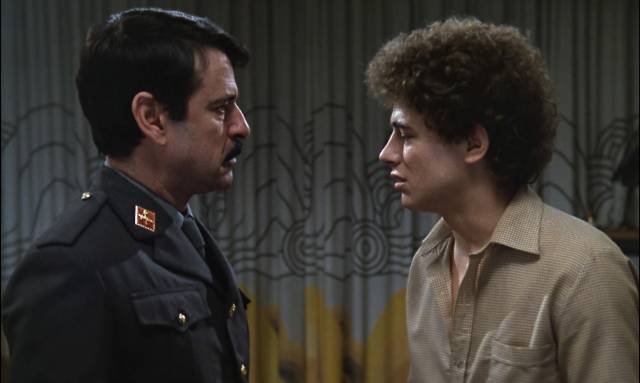
is a drug addict in Eloy de la Iglesia’s El Pico (1983)
I mentioned recently that to a large degree my viewing is now being “curated” by the companies which distribute movies on Blu-ray. I do still try to support the one remaining physical store near where I live, though browsing there is pretty much as random as my buying gets; interestingly, whoever does their ordering now brings in a lot of titles from the companies I like (plenty from Severin, Vinegar Syndrome, Arrow, Shout! Factory and Criterion – I even found several Cauldron releases there a couple of weeks ago), though they show up a while after release, so I’ve usually already got my copies. But most of what I buy is done directly from the companies’ own websites or aggregate sites like Diabolik in the U.S., Zavvi in England or Unobstructed View here in Canada. As if to illustrate my point about the way my choices are curated by these companies, Severin just handed me an excellent example with their August releases.
In an interesting (risky?) move, three of their four releases were devoted to a filmmaker not widely known outside of his home country. (The fourth title, incongruously, was the Kurt Russell-Goldie Hawn rom-com Overboard, which I didn’t order!) I knew nothing about Basque director Eloy de la Iglesia before these releases – two stand-alone features from the early 1970s and a set of three from the early ’80s – but Severin’s mini retrospective provides an excellent introduction. What makes these films even more interesting is that they reveal some pretty large shifts in Spanish cinema from the late stages of the Franco dictatorship to the rocky restoration of democracy after Franco’s death in 1975.
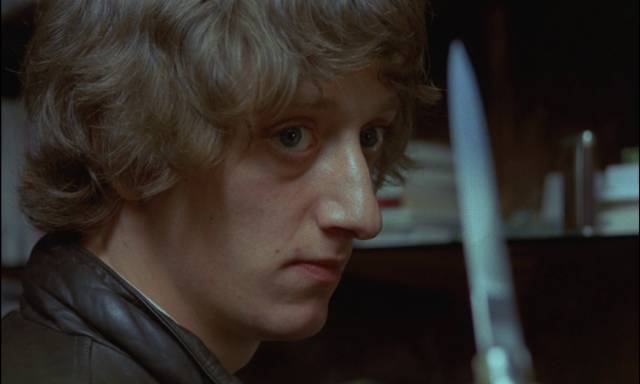
Under the Fascist regime, censorship was strictly imposed, forcing filmmakers to find inventive ways to avoid having their work mutilated. Because popular genres were taken less seriously, horror and mystery often became a way of coding commentary on the repressive society, while people like Jess Franco disguised much of what they did through co-production deals with French and German companies which would essentially make their work “foreign” rather than Spanish. Many Spanish filmmakers were relegated to the fringes as the industry’s resources were often put in the service of big international productions. Samuel Bronston established a studio in the country and produced a series of epics in the first half of the ’60s (King of Kings, El Cid [both 1961], 55 Days at Peking [1963], The Fall of the Roman Empire [1964]); Sam Spiegel took advantage of the financial benefits by locating large chunks of Lawrence of Arabia there, and David Lean returned a few years later to shoot parts of Doctor Zhivago in Spain. Then, of course, the Italians took advantage of both resources and landscapes for countless spaghetti westerns throughout the ’60s.
Apart from the limitations faced by most Spanish filmmakers, Eloy de la Iglesia confronted other obstacles; like Pier Paolo Pasolini in Italy, he was both gay and Communist in a society still dominated by the Catholic Church, necessitating self-imposed personal repression along with deeply embedded social and political repression. Given where his career went, it seems implausible that his debut feature, made when he was only twenty-two, was a children’s film called Fantasia 3 (1966), an anthology of three stories, including The Little Mermaid and The Wizard of Oz. This was followed by two more features a few years later which were not commercially successful, the second of which, Boxing Ring (1970), ran into censorship problems and was more or less disowned by de la Iglesia.
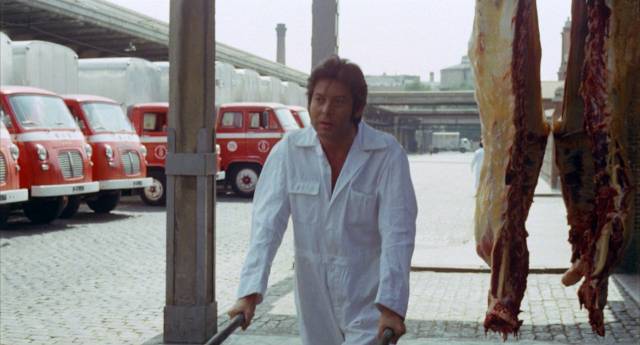
The Cannibal Man (1972)
He had much better luck the following year with a psychological thriller called The Glass Ceiling (1971), but seems to be better known outside of Spain for his next film, at least in part because it eventually found its way onto the British “video nasties” list. In Spanish its title is La semana del asesino (1972), which translates to The Week of the Killer, or more concisely The Killer’s Week, but was given the more lurid – and very misleading – English title The Cannibal Man. There’s no cannibalism here (well, perhaps very oblique and tangential cannibalism, but certainly not indulged in by the protagonist) and although there is some graphic violence this is definitely not a horror film, although Severin’s packaging certainly leans in that direction.
What it is is a very black comedy in which are embedded some pointed critiques – social, economic and sexual – of Spanish society under Fascism. Cast in the form of a violent thriller, these thematic elements apparently largely escaped the censors’ attention.
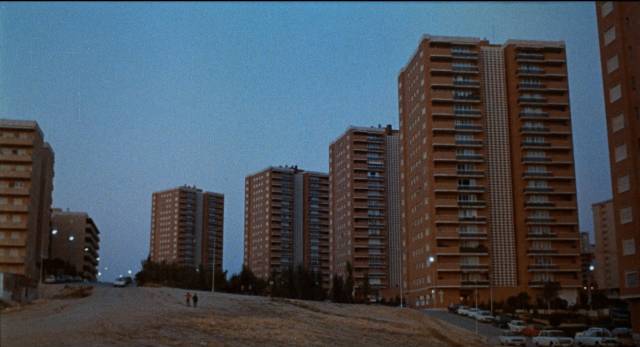
The film begins as what seems like a social realist depiction of life on the economic fringes, Marcos (Vicente Parra) being a working class guy with limited prospects, living in a collapsing house in the middle of a wasteland overlooked by new apartment towers on the outskirts of Madrid. He works in a slaughterhouse attached to a plant which makes canned soup (the most horrific imagery in the film depicts the actual slaughter of cows in the opening stretch). He has a younger girlfriend, Paula (Emma Cohen), who has to keep their relationship secret from her strict parents, and is flirted with by Rosa (Vicky Lagos), who runs a nearby bar. He is also observed by Nestor (Eusebio Poncela), who lives in one of the highrises and can see with binoculars into Marcos’ house through a skylight.
Marcos is a passive character, almost paralyzed by his dead-end life. His mother died a few years back in a grotesque accident in the plant where he now works; his brother drives a long-distance truck; and despite being given a promotion at work, nothing seems likely to change. He merely reacts as things happen to him, in the moment and with no thought of consequences. And so when he gets into an argument with a cab driver who becomes abusive towards Paula, Marcos hits the man with a rock. He and Paula run away, only learning from the paper the following day that the cabbie has died.
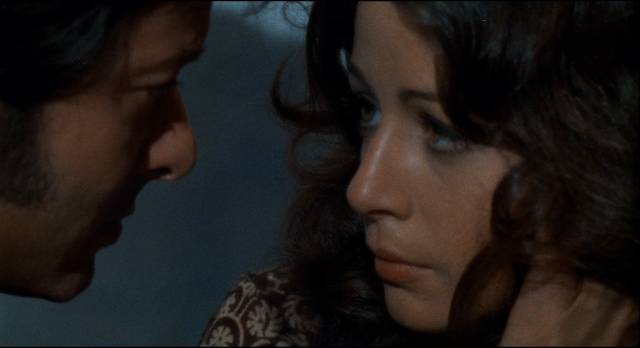
Marcos points out that there’s nothing to tie him and Paula to the death, but her conscience insists that they must go to the police, even though that would mean prison for Marcos. So he strangles her and stuffs her body under his bed. This begins a chain of increasingly violent and almost surreal events, with a new killing every day, always in response to annoying intrusions into his personal space – which needless to say quickly becomes unpleasantly smelly as the bodies pile up in the bedroom. The film’s bleak humour comes from the incongruity between Marcos’ passivity and the intensifying violence of his responses to circumstance, which includes his decision after a few days to dismember the bodies and take the parts to work in a valise so he can feed the rotting flesh into the big grinder which prepares animal scraps for the canned soup – the plot’s tangential element of cannibalism.
During the week, as Nestor walks his dog on the wasteground, a tentative friendship begins. Nestor is coded as gay, a status which makes him something of an outsider even though his higher social class gives him a security not available to Marcos. One evening, police stop at a bar where the two men are having a drink on the patio; Marcos fumbles nervously when asked for his identity papers, but Nestor casually tells the armed men that he doesn’t have them with him. The working class guy has no defence against authority and they view his sweaty nervousness with suspicion, but they greet Nestor’s casual disdain with deference, reflecting the obvious class difference.
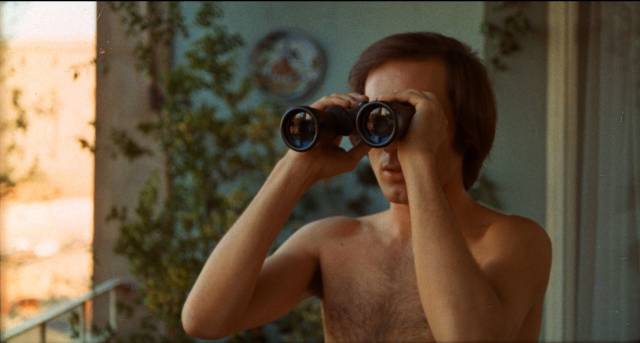
When Nestor eventually reveals that he has seen Marcos committing his murders, Marcos instinctively reacts by putting a broken glass to his neighbour’s throat; but he falters when Nestor shows no fear or concern, instead merely suggesting that Marcos should bury the bodies. The realization that they are both outsiders and that Nestor doesn’t judge him triggers an awakening self-awareness. Marcos’ response has some psychological validity, but it also reflects what may be the film’s one concession to the censors as he calls the police to turn himself in. The quiet, downbeat ending is in keeping with the impression which runs through the film that Marcos has no options, that he is trapped and that this week’s eruption of violence is a futile, nihilistic gesture which, for him, ultimately resolves nothing.

in Eloy de la Iglesia’s No One Heard the Scream (1973)
No One Heard the Scream (1973)
Having found a way to express ideas and attitudes through a genre which managed to escape the full attention of the censors, de la Iglesia followed The Cannibal Man with another thriller the following year. No One Heard the Scream (1973) is less bloody, but shares a subdued comic tone with the previous movie. Elisa (Carmen Sevilla) lives in a nearly empty building which is still under construction. Deciding at the last minute not to fly to London for a weekend with her older, rich lover, she inadvertently sees her neighbour dropping his wife’s dead body down the elevator shaft. Locking herself in her apartment, she tries to phone the police, but the neighbour, Miguel (Vicente Parra again), appears on the balcony with a gun. She has no choice but to let him in and he proposes an alternative to killing her – she can become his accomplice in disposing of the body, making it impossible for her to turn him in without implicating herself in the murder.
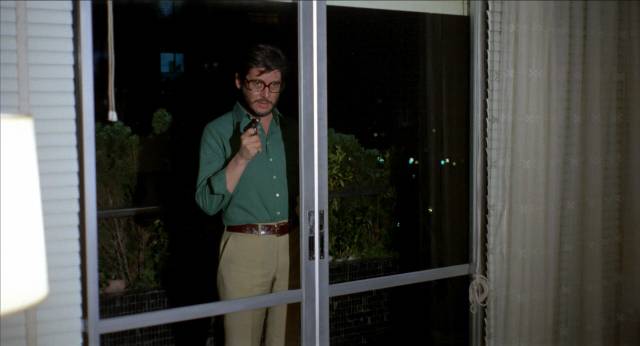
This plan keeps running into unforeseen obstacles, building suspense as they first have to retrieve the body from the bottom of the shaft, avoiding the prying of the annoying concierge, then stuff it in the trunk of her car and drive it out of the city. Along the way, they are stopped at the site of a bad traffic accident where the police enlist their help to drive injured bus passengers to the hospital in the next town; in the process of loading the bloody victims into the small car, the police come very close to discovering the body in the trunk. When the pair finally arrive at a lake where Elisa has access to a cottage and boat, they dump the body in the deep water and she attempts to kill Miguel, but can’t go through with it. Back on shore, they find that her younger lover Tony has just arrived at the cottage.
The necessity of hiding the situation from Tony reinforces the evolving alliance between Elisa and Miguel and by the time they head back to the city, their shared experience has generated sexual tension between them and they jump into bed in her apartment. But there’s a final twist which seems inevitable if not entirely expected, amplifying the sexual complications running through the film and trapping Elisa even more deeply in the crime.
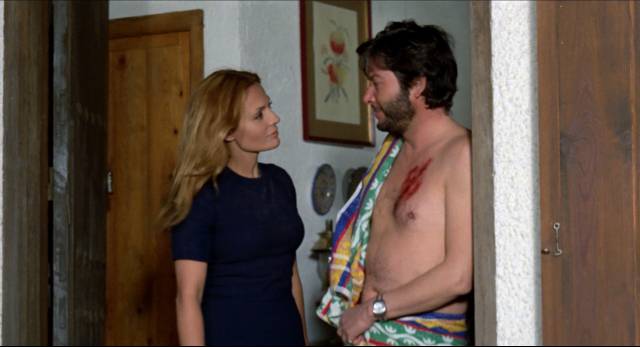
Both these films work effectively on the level of the thriller, building tension, suspense and surprise, but they also work as blackly comic critiques of the repressive, rigidly stratified society of Fascist Spain. Franco died two years after the release of No One Heard the Scream and the country began the process of opening up. In the eight years following Scream, de la Iglesia made nine features which spanned that process, none of which I’ve seen because Severin skips over them to go straight to three films from the early ’80s starring Jose Luis Manzano, a young non-professional with whom the filmmaker developed a sexual relationship and shared heroin addiction – Manzano died of an overdose in 1992 at age twenty-eight, while de la Iglesia’s career crashed in 1987 due to his own addiction.
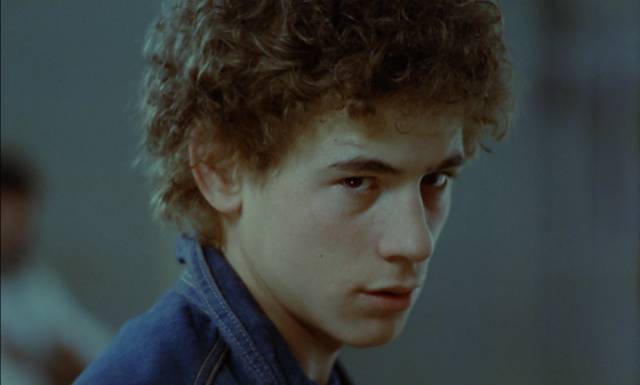
The Quinqui Collection (1980-84)
The three films in Severin’s two-disk Quinqui Collection no longer need to disguise their concerns; sexuality and drug use are not only explicit, they’re central to the world being depicted with a mix of social realism and melodrama. Quinqui was a slang term which became synonymous with delinquent, and the films in the genre were frequently based on actual events and starred the kids whose stories were being told. The location shooting, the use of many non-professionals in the casts and the improvisational tone are occasionally reminiscent of Neorealism. In each film Manzano plays a delinquent who is sexually ambivalent and involved in crime, spiralling into increasingly dangerous situations because there seems to be nowhere else to go. Post-Franco democracy doesn’t have much to offer marginalized people and remnants of Fascism linger on in the brutal, heavily-armed police.
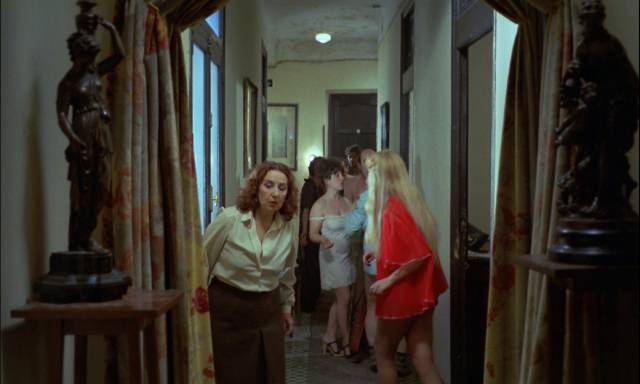
In Navajeros (1980), Manzano is El Jaro, a fifteen-year-old who already has a lengthy record of petty crime – purse-snatching, car-theft, breaking into stores – with numerous stays in reformatories from which he routinely escapes. With an absent father and a mother who survives via prostitution, he left home at twelve and lived on the streets with his friends. At some point, he settled down with Mercedes (Isela Vega), a prostitute in her thirties who offered him a place to stay and emotional support in the form of combined mother and lover.
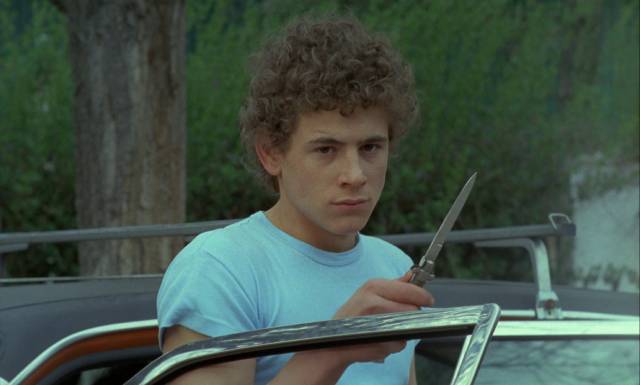
Attracted to Toni (Veronica Castro), the sister of his friend Chus, he escalates his criminal activity to make enough to support her drug habit. This gets him into deep trouble and eventually leads to the death of Chus and a serious wound to himself during a failed burglary (the wound is freighted with symbolic implications as it involves the loss of one testicle along with his sense of his own manhood). With Toni pregnant, and Mercedes promising to look after them all including the baby, El Jaro becomes more reckless, leading to a final fatal incident as his son is being born…
Running parallel to El Jaro’s grim life, a reporter (Jose Sacristan) works on an article about the causes of delinquency and the inadequacy of the legal and social mechanisms which attempt to deal with the problem, mechanisms which are holdovers from the repressive Fascist state which react reflexively with violence rather than empathy and understanding.
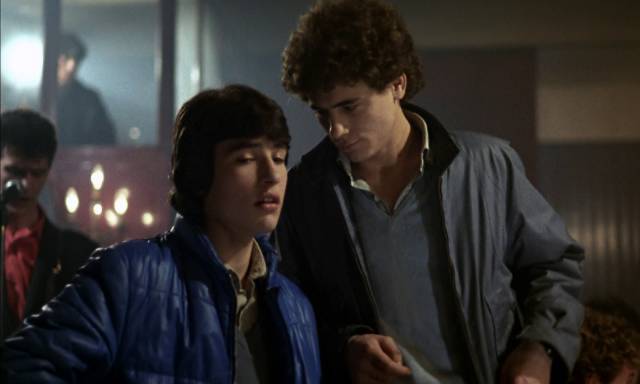
These themes are also present in El Pico (1983) and its sequel El Pico 2 (1984), although it applies them not to the underclass, but rather to the middle class which is engaged in navigating the post-Franco political situation. Manzano is Paco, the son of Evaristo Torrecuadrada (Jose Manuel Cervino), a commander in the Guardia Civil, the para-military police force which is still deeply imbued with Fascist attitudes. His best friend is Urko (Javier Garcia), the son of leftist politician Martin Aramendia (Luis Iriondo), despised by the right wing for his efforts to dismantle the repressive state and build new alternative social and political structures.
Paco dislikes everything his father stands for, something he shares with his mother Eulalia (Queta Ariel), who is dying of cancer, and he rebels by becoming a drug addict and hanging out with Urko at the apartment of prostitute Betty (Lali Espinet), who connects them with a dealer. El Cojo (Ovidi Montllor) lives with his heroin-addict wife Pilar (Marta Molins), who eventually gives birth to an addicted baby. He supplies the boys with drugs which they sell to support their own and Betty’s habit. But it’s not enough and one evening Paco steals some of the morphine used to control his mother’s pain, leading to a confrontation with his father, who is horrified that his son could be a drug addict.
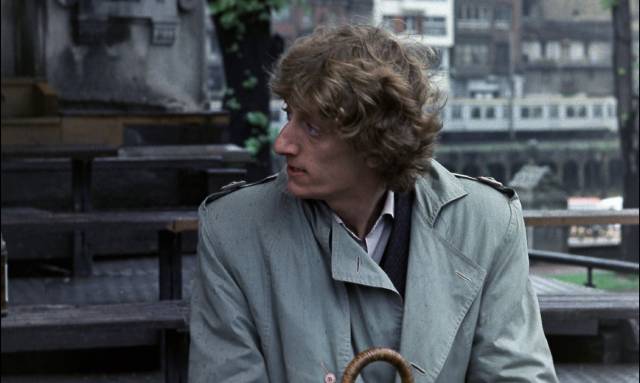
Leaving home, Paco goes to Mikel Orbea (Enrique San Francisco), a well-known gay sculptor who is attracted to Paco and agrees to help him go cold turkey. He sees Paco through the ugly, painful process; but although Paco is grateful he can’t reciprocate the sculptor’s feelings and eventually returns home just before his mother dies. After the funeral, Paco rejoins Urko, who has also kicked his habit, but they both get back together with Betty and that reconnects them with the drugs, leading to a rapid decline which results in a violent crime. Identified by a witness, their involvement forces both Evaristo and Martin to re-evaluate their own beliefs. Evaristo is appalled by the violent methods of Lieutenant Alcantara (Pedro Nieva Parola), the officer assigned to the search for Paco, who uses brutal methods on suspects and witnesses alike.
In the sequel, El Pico 2, Paco has to deal with life in prison as his father tries to manipulate the system to get him released. Life inside is harsh and to some degree resembles what we have seen in so many prison movies. Paco is beaten by a gang, his personal possessions (including shoes) stolen. The fact that he’s known to be the son of a cop makes him more of a target than the average new inmate. He’s befriended by a more seasoned inmate, El Pirri (Jose Luis Fernandez, essentially playing himself) and taken under the wing of El Lehendaktari (Jaime Valls), a Basque separatist who has an elaborate plan to escape. The latter arranges to have Paco and Pirri moved to his cell, which he shares with his transsexual partner.
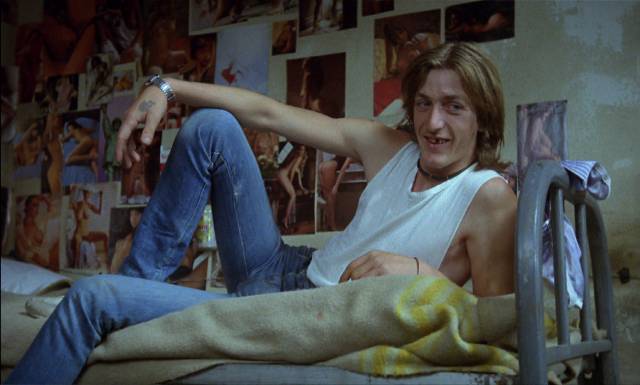
While keeping out of the way of those who have a predatory interest in him, Paco and Pirri get access to heroin and shoot up as much as they can to avoid dealing with numerous threats from other inmates. El Lehendaktari makes his escape, and Paco is eventually released because of his father’s efforts. But life on the outside is no easier and he just can’t shake the drug habit. He falls in with El Lehendaktari, but there seems to be little difference between political violence and ordinary crime and events move inexorably towards a bloody climax.
All three of these films are harsh and unsentimental – in this they bear a strong resemblance to Hector Babenco’s Pixote (1980), with many of the “stars” sharing a similar fate to that film’s Fernando Ramos da Silva, dying young from violence or drug overdoses. De la Iglesia treats drug addiction without flinching – for someone like me with a fairly strong needle phobia, the many close-ups of needles sliding into actual veins were hard to watch – while sexuality is stripped of romanticism. Although there are elements of tenderness, for the most part it’s purely transactional; boys who use homophobic slurs will engage in sex with a man who has drugs to feed their habit. The brutal realities of these kids’ lives make the political conflicts running through society seem arbitrary and ineffectual.
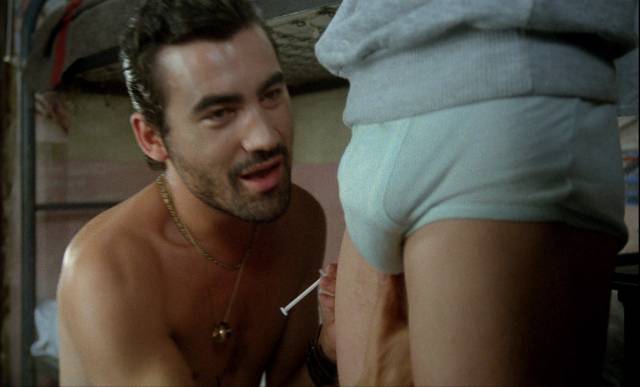
Eloy de la Iglesia directs with the blunt force of a Sam Fuller, stripped of moralizing while exhibiting real empathy for these boys; the films don’t try to propose solutions to the glaring failures of Spanish society, other than urging the audience to share that empathy, to see the humanity beneath the pain and despair. While the documentary elements give the films an immediacy, even a sense of urgency, de la Iglesia also makes use of the cinematic skills he had developed in his earlier narrative work; in Navajeros, the influence of Stanley Kubrick seems apparent in montages of El Jaro and his friends committing their various crimes set to light classical music, calling to mind the vicious antics of Alex and his droogs in A Clockwork Orange.
As much as de la Iglesia is skilled with the camera and editing, he also works extremely well with his casts, both professionals like Vicente Parra and Carmen Sevilla and raw amateurs such as the street kids of the Quinqui movies. The films from both periods display intelligence and an empathy for people on the fringes of society and a visceral understanding of the violence threaded through a society which is emerging from decades of Fascist repression. In releasing these five features together, Severin have made a major contribution to my admittedly limited understanding of Spanish cinema.
*
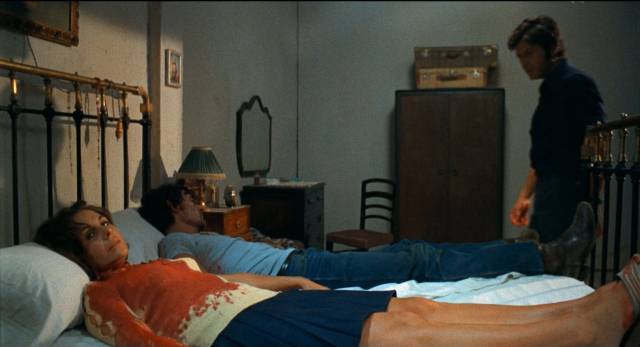
If the films themselves weren’t enough, Severin have also provided substantial extras which fill in a lot of detail about de la Iglesia’s life and work, the political context of Spain under Franco and afterwards, and the nature of the Spanish film industry during the decades in which de la Iglesia worked. On the Cannibal Man disk, which offers both the international cut and the longer Spanish version, Stephen Thrower and Shelagh Rowan-Legg discuss the director for almost half-an-hour, while Carlos Aguilar delves into more personal aspects of de la Iglesia’s life and work for almost twenty minutes. On the No One Heard the Scream disk, Andy Willis talks about the influence of Hollywood and Italy on the Spanish film industry, particularly on genre filmmaking.
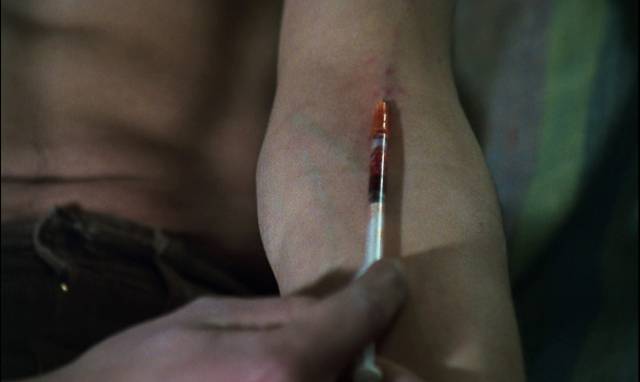
The Quinqui Collection includes a brief interview with actor Jose Sacristan about working with de la Iglesia and the political climate in which the films were made; a forty-five-minute overview of the quinqui genre by film historians Mary Cuesta and Tom Whittaker; and a sixty-seven-minute panel discussion with scholars Alejandro Melero and Paul Julian Smith, moderated by Evan Purchell, which covers de la Iglesia’s career, the depiction of homosexuality in Spanish cinema, Marxist criticism of the films, issues around distribution and other matters.
Altogether, these releases provide a masterclass on a filmmaker whose work is vibrant, entertaining and challenging.
Comments